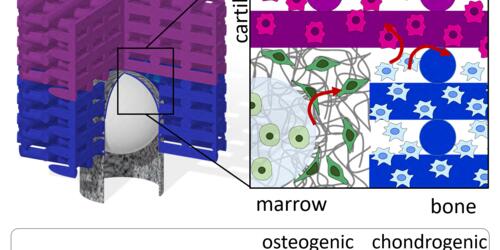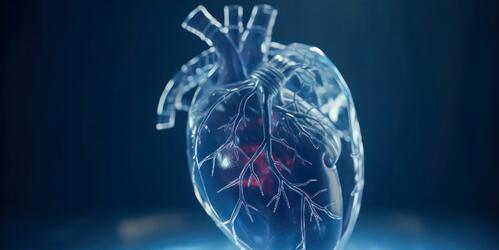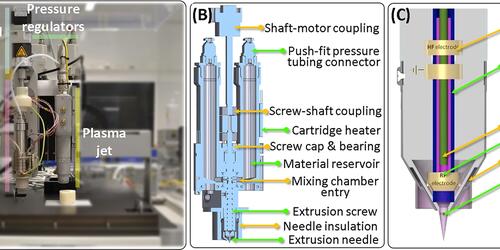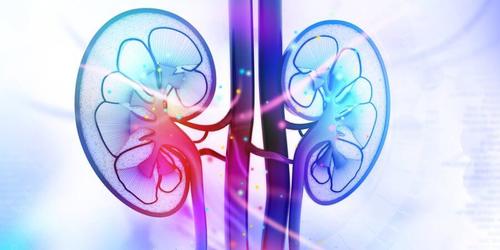Integrate neural and vascular cues
Integrate neural and vascular cues in tissue and organ regeneration strategies.
 Despite the terrific pace of biofabrication development in different labs and companies settings world-wide, we are still far from achieving the dream of fabricating a fully functional organ. Current technologies and the continuous development of new biofabrication platforms certainly hold the promise to realize biofabricated tissues and organs, but we must still solve many challenges before we can deliver fully functional organs into the clinics or as 3D screening models. One critical aspect of creating clinically relevant functional constructs is the successful integration of these engineered tissues into the body, for which we need to master the mechanisms of vascularization and innervation of tissues. The role of the immune system during im
Despite the terrific pace of biofabrication development in different labs and companies settings world-wide, we are still far from achieving the dream of fabricating a fully functional organ. Current technologies and the continuous development of new biofabrication platforms certainly hold the promise to realize biofabricated tissues and organs, but we must still solve many challenges before we can deliver fully functional organs into the clinics or as 3D screening models. One critical aspect of creating clinically relevant functional constructs is the successful integration of these engineered tissues into the body, for which we need to master the mechanisms of vascularization and innervation of tissues. The role of the immune system during im plantation of these constructs will also need to be more clearly elucidated and regulated in order to steer successful integration with the surrounding tissues. When moving from these multicellular and heterogeneous advanced tissue models to full organs, an exquisite biological understanding of each cellular sub-population comprising the targeted organ will be required before we can replicate the anatomy and physiology of such organ.
plantation of these constructs will also need to be more clearly elucidated and regulated in order to steer successful integration with the surrounding tissues. When moving from these multicellular and heterogeneous advanced tissue models to full organs, an exquisite biological understanding of each cellular sub-population comprising the targeted organ will be required before we can replicate the anatomy and physiology of such organ.
Initial investigations on how different biofabrication platforms could be combined to recreate a synthetic mimicry of the ECM of the peripheral nervous system have been started. The goal in the coming years is to complement this know-how with vascularization and understand how neurovascular stimuli can modulate tissue regeneration.
Researchers involved in this project
Paul Wieringa, Afonso Malheiro, Tianyu Yao, Rabeil Sakina.
Related publications
Malheiro A, Thon M, Lourenço AF, Seijas Gamardo A, Chandrakar A, Gibbs A, Wieringa P, Moroni L. A humanized in vitro model of innervated skin for transdermal analgesic testing. Macromolecular Bioscience 2023; 23(1): 2200387
Download PubblicationRamos T, Ahmed M, Wieringa P, Moroni L. Schwann cells promote endothelial cell migration. Cell Adh Migr. 2015 Nov 2;9(6):441-51.
Download PubblicationMasaeli E, Wieringa PA, Morshed M, Nasr-Esfahani MH, Sadri S, van Blitterswijk CA, Moroni L. Peptide functionalized polyhydroxyalkanoate nanofibrous scaffolds enhance Schwann cells activity. Nanomedicine 2014, Oct;10(7):1559-69.
Download Pubblication




